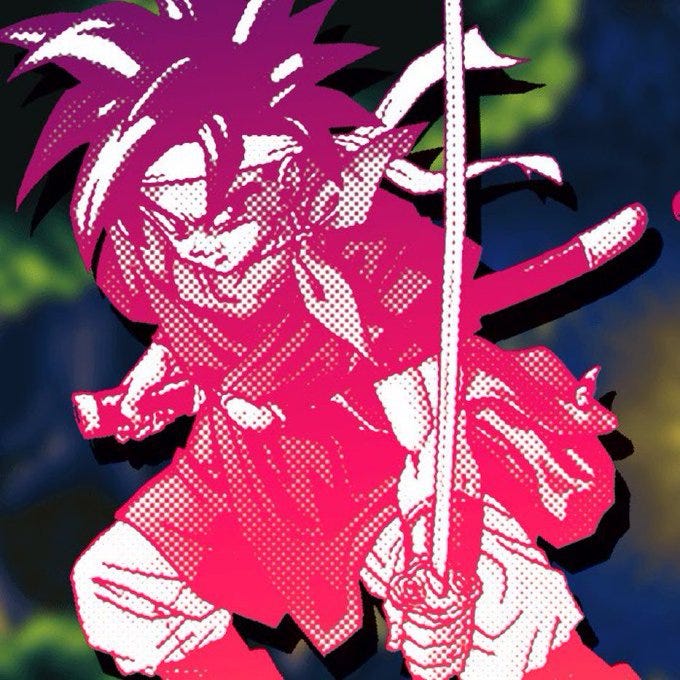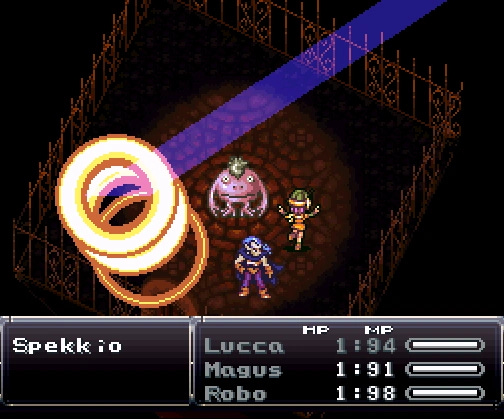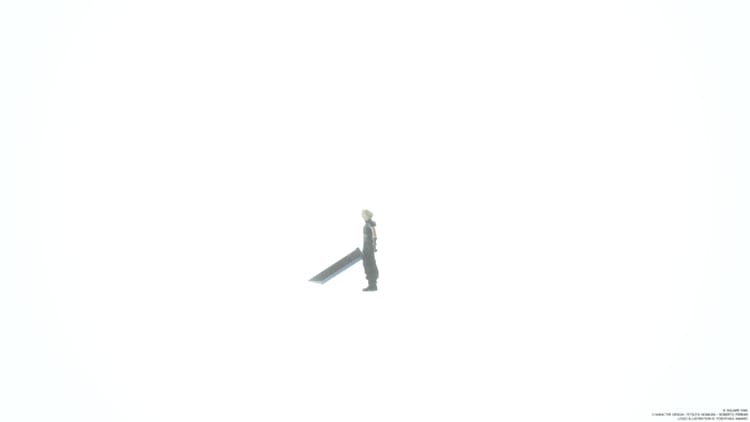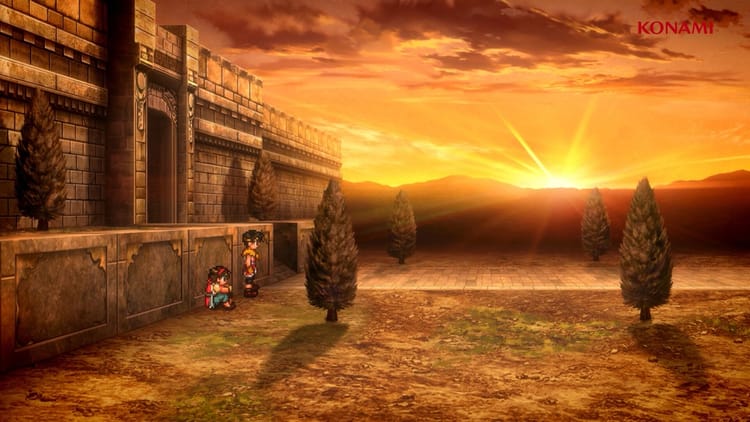Replay Value: Chrono Trigger — The Writer on Mt. Woe (Part 2)
Welcome to Replay Value! In collaboration with Daniel Dockery, this four part miniseries (read part one) explores one of the most consequential games I covered in my book, Fight, Magic, Items: The History of Final Fantasy, Dragon Quest, and the Rise of Japanese RPGs in the West: Chrono Trigger!
Replay Value is a cross-newsletter series hosted by Daniel and myself where we’re each replaying a childhood favourite—Chrono Trigger and Pokemon Yellow, respectively—and asking each other pointed questions along the way. For the next four Fridays, you’ll track our progress in the game and get an inside track on just why we love these games so much. Head on over to Daniel’s terrific newsletter, , to check out his progress on Pokemon Yellow for the Game Boy. And consider checking out his amazing book, Monster Kids: How Pokémon Taught a Generation to Catch Them All, which is a great companion to Fight, Magic, Items.
- Replay Value: Chrono Trigger — Party Like It's 1999
- Replay Value: Chrono Trigger — The Writer on Mt. Woe
- Replay Value: Chrono Trigger — A wild side quest appears!
- Replay Value: Chrono Trigger — *coming December 1*
Hop in the Epoch!

In part one, I played through the game’s first act—from the opening at the Millennial Fair to the showdown with Magus in his castle. It’s a pitch perfect bit of epic storytelling, with tropes pulled from various genres and blended into something magical. Nowhere to put the controller down, something around every corner. The Dream Team’s expertise and experience making JRPGs shines through Chrono Trigger’s attention to polish and lack of excess. It really is perfect. (Except for the unavoidable battle in 600AD’s Truce Canyon, of course.)
With Magus gone (for now), and the threat of Lavos intensified, Chrono Trigger takes on a new urgency as its true stakes are revealed. Plus, we get to travel through one of the most iconic and interesting locations in the genre: The Kingdom of Zeal and the ice-covered surface world in 12,000BC. Its commentary about the excess of wealth and power rings more true than ever in 2022—and Schala’s inherent goodness, counterbalanced by her younger brother’s grief, remains my favourite emotional beat in the game (outside, perhaps, of Marle’s endless optimism.)
So, hop in the Epoch with me and Daniel, ‘cause we’re about to go time travelling.
Q&A with Daniel Dockery
Daniel Dockery: Who is your preferred trio to use? What is the Best Squad?
Aidan Moher: One of my favourite things about Chrono Trigger is that whether you’re doing a fresh playthrough or a New Game + run, any party combination is completely valid—offering a ton of flexibility and replay value. At this point, I’ve played with all the characters extensively through any number of playthroughs, and love them all for different reasons. On a fresh playthrough I might go with Crono, Ayla, and Marle—mostly to access Twin Charm, so I can beef up my supply of Megaelixirs, Prism gear, and speed/magic/power tabs—but more often than not I play with my favourite canon party: Crono, Lucca, and Marle. Lucca is my bestie, Marle’s the primary plot driver, and Crono just rips. It’s not the strongest party, but it’s fun and versatile. Plus, I just love seeing BFFs save the world together—and the scene on top of Mt. Woe is that much better!

If we’re talking raw power, though, the best party is Lucca, Robo, Magus. You’ve got decent physical attacks, incredible magic techs, and access to a bit of healing. Most importantly, you’ve got the Omega Flare triple tech thanks to the blue rock, which’ll end any battle in the game with minimal effort.
DD: So, some newer video game fans might be hesitant to dive into Chrono Trigger because it's older but also because SO MANY good and iconic JRPGs have come out since. How do you persuade them to give it a shot?
AM: My selling point for Chrono Trigger is that it’s the most economical and densely packed JRPG of all time. By taking all the expertise of the creators of Final Fantasy and Dragon Quest, along with a ridiculously stacked team of artists, programmers, writers, and musicians, and giving them free reign to be something that wasn’t Dragon Quest or Final Fantasy, but could take the best of both, they created the definitive 16-bit JRPG. It feels like the culmination of the genre’s first Golden Age—the perfect send off before Final Fantasy VII revamped the genre a couple years later. It’s a blast to play, super snappy, literally doesn’t have a moment where it feels right to put down the controller and shut down your console, and introduces systems to the genre that are still relevant today (like New Game +.)
It's out! "Timeless: A History of Chrono Trigger" is a deep dive look at my favourite game of all time and the people that made it. I've poured my heart into this piece, and I hope you enjoy reading it as much as I've enjoyed writing it! #retrogaming
— Aidan Moher (Not Parody) (@adribbleofink) 3:33 PM ∙ Sep 16, 2020
In “Timeless: A History of Chrono Trigger,” I wrote, “Chrono Trigger is so many things. It’s whimsical and warm, tense, exhilarating, and thoughtful. It’s brisk and endlessly replayable, it’s bright and vibrant, its music gorgeous, its sprite art masterful. Chrono Trigger epitomizes the first golden age of JRPGs popularized by Dragon Quest and Final Fantasy in the ‘80s.”
Combining the experience, vision, and, most critically, egos of creators as big as Yuji Horii (Dragon Quest) and Hironobu Sakaguchi (Final Fantasy) is fail spectacularly nine times outta ten, but we just happened to be born in the iteration of the universe where we got the absolutely perfect 16-bit JRPG.
DD: Chrono Trigger's playability among multiple systems and platforms has been well-discussed, but what is your preferred Chrono Trigger experience? Where is the best home ever granted to it?
AM: Chrono Trigger has had some really great releases and… some not so great releases. Fortunately, the only one truly worth skipping is the PlayStation version (as part of Final Fantasy Chronicles) due to its load times and general slowness. Otherwise, every other release is more than playable. That said, there are some differences that make three particular stand outs.
My most common method to play it is my childhood cart on a Super NES and my Commodore 1702 monitor. This is the exact set up I used when I first got the game as a 12 year old, and calling it “nostalgic” and “perfect” is a vast understatement. But, the cart also costs a million dollars nowadays, and not everyone is keen on setting up old hardware or a CRT. The DS remaster is brilliant, and, if you ask me, probably the definitive version of the game. It features new content (that’s… mostly mediocre-to-annoying, to be honest), a great new localization, and, best of all, portability. It looks great on the DS’s screen, and is perfect for a quick New Game+ replay. It’s also getting pricey, though.
The best combination of value and accessibility, however, and the one that probably makes the most sense for newcomers, is the Steam version. It was a mess when first released, but Square Enix released several patches that make it one of the most polished versions of the game. You have official widescreen support, all the content from the DS remaster, and it’s just $15 US.
DD: Why are prehistoric time periods in era-jumping JRPGs so fun?
AM: I think the major reason is they’re still a novelty, right? We’ve had a ton of science fiction in our JRPGs from the beginning, and epic fantasy pastiche is almost a prerequisite. Chrono Trigger does lots of fun things by, say, exploring a typical faux-medieval settings (600AD) and then looking at it after 400 years of technological advancement in 1000AD—it’s got robots like Gato now! A steamboat, fridges, plumbing, and coil-burner stoves! Then it leans into 12,000AD, which is a dichotomy of plush excess in Zeal, and post-apocalyptic survival on the surface.
But the prehistoric setting (65,000,000BC) is ultra low tech—like, you’re literally trading feathers and horns, and Ayla doesn’t even use a weapon—which is the opposite of most JRPGs that lean heavily into magic, technology, or both. It’s still unexplored territory when you’re adventuring through a land where humans are still literally millions of years away from dominance. Wild how they can all understand each other when they speak, though, hey?
End Step
Feel free to leave a comment before with your own answers to Daniel’s questions, or join the Replay Value conversation on the Substack app!
And, subscribe to make sure you get the next instalment of Replay Value: Chrono Trigger in your inbox next Friday!
Astrolabe is a reader-supported publication. To receive new posts and support my work, consider becoming a free or paid subscriber.
Support
There are lots of ways to support Astrolabe and my other work. Check ‘em out!
Keep In Touch
Enjoy Astrolabe? Want more SFF and retro gaming goodies? You can find me on Twitter and my website.
Credits
Astrolabe banner photo by Shot by Cerqueira on Unsplash





Member discussion